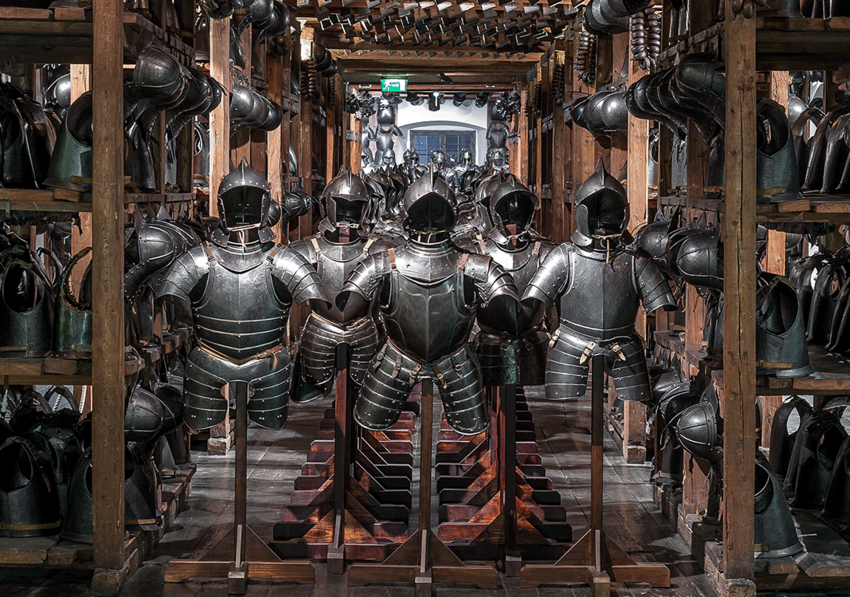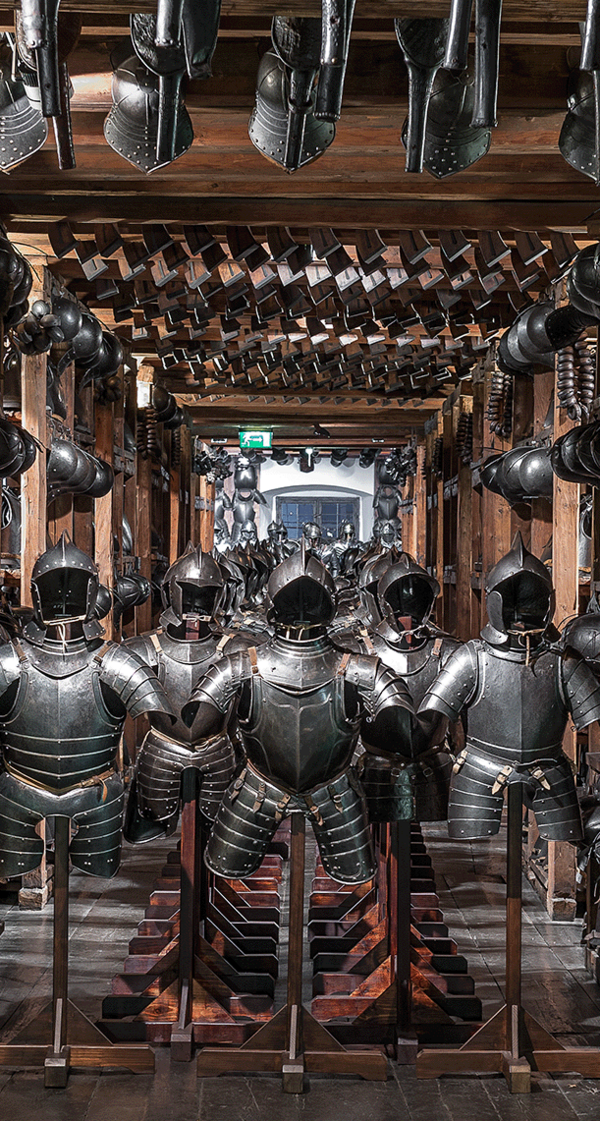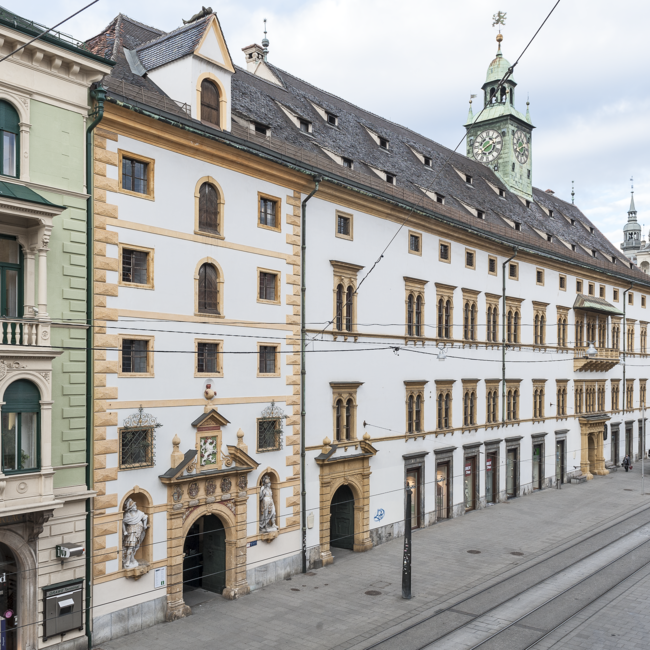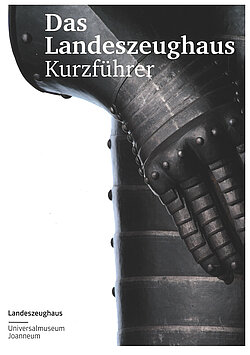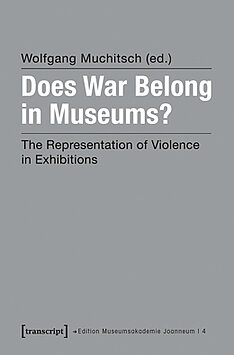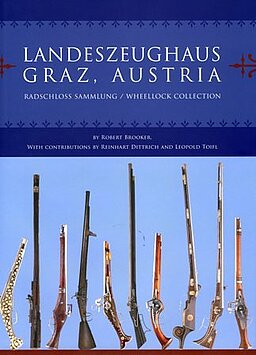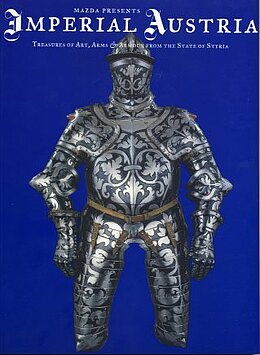objects bear witness to a period of intense conflict, serving as a memorial to regional history, a sensitive heritage site and also a challenging task for restorers and curators.
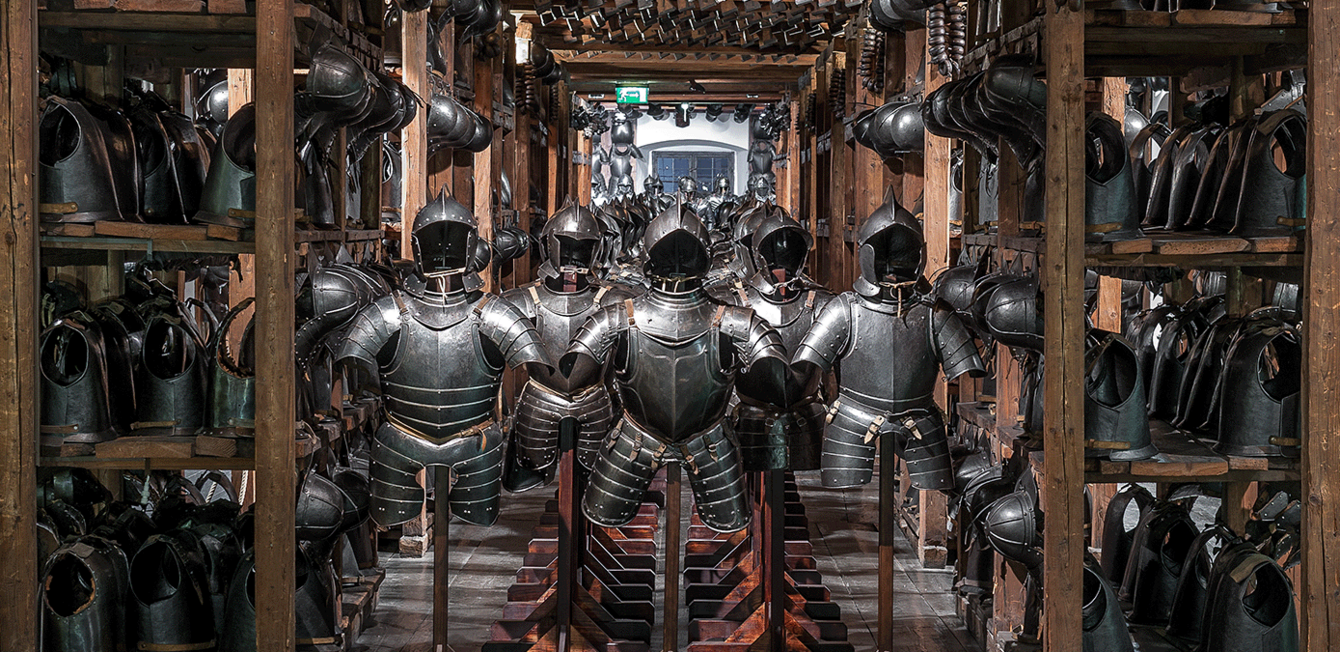
32.000
1642-44
the Styrian estates had the 'regional armoury' built according to plans drawn up by Antonio Solar. As an arms depot, it was from then on the most important centre for equipment in the southeast of the Habsburg Empire.
On tour
Parts of the collection have been shown internationally in recent years and seen by hundreds of thousands of visitors.
Historic Armoury
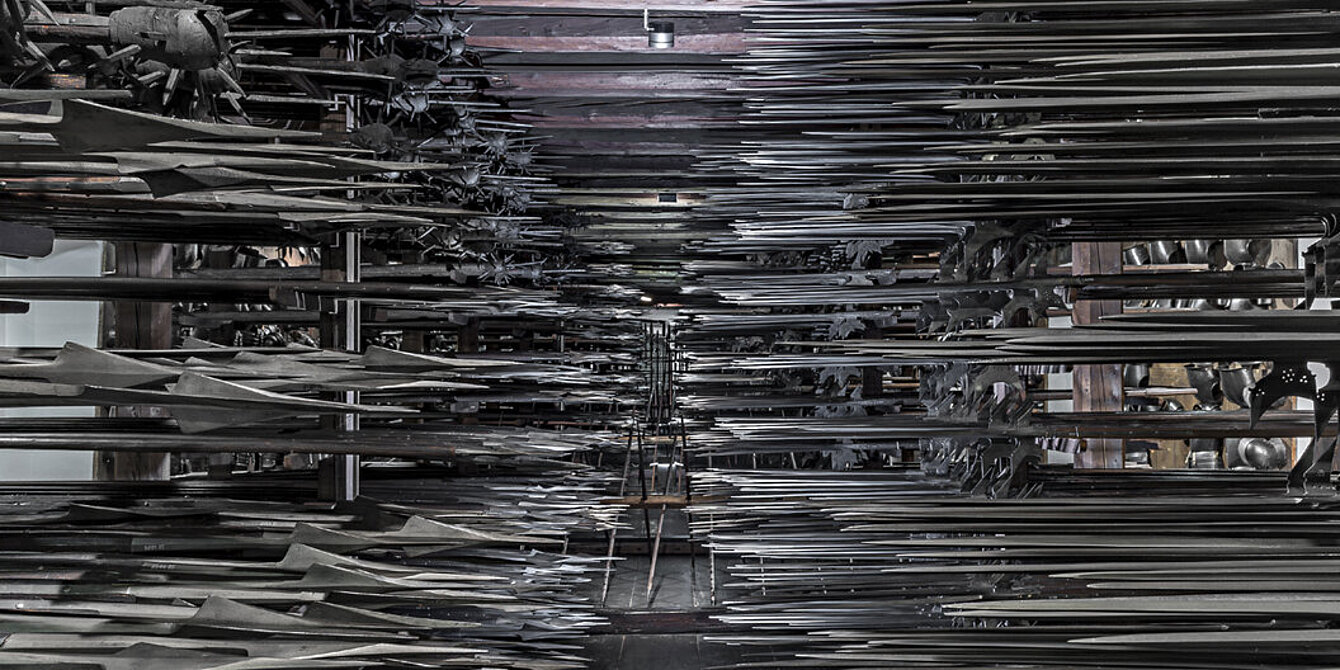
Image Credits
Styrian Armoury Items bearing witness to a past awash with conflict all in one unique place: the Landeszeughaus is the world’s largest historical armoury and, thanks to its functional architecture, it is also one of the city’s most significant heritage sites.
Opening hours
Tue-Sun, public holidays
guided tours: Tue-Sun 11am (GER), 12:30pm (EN) and 2pm (GER)
or by prior appointment
We look forward to your visit!
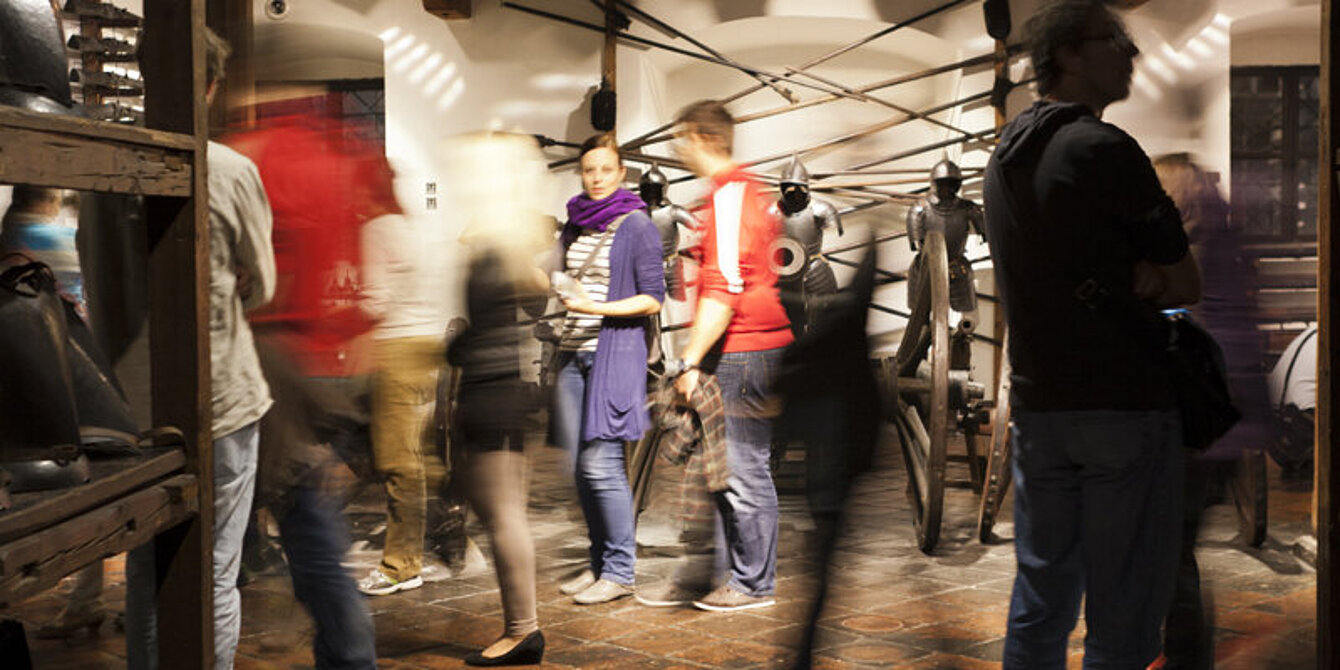
Image Credits




















